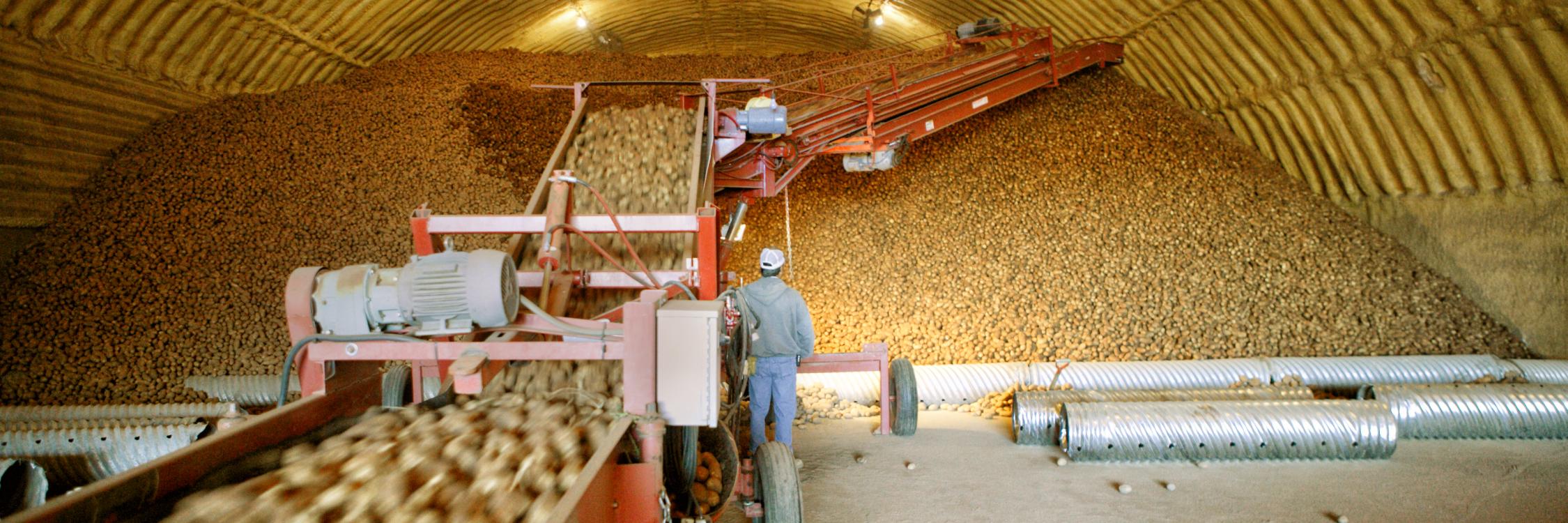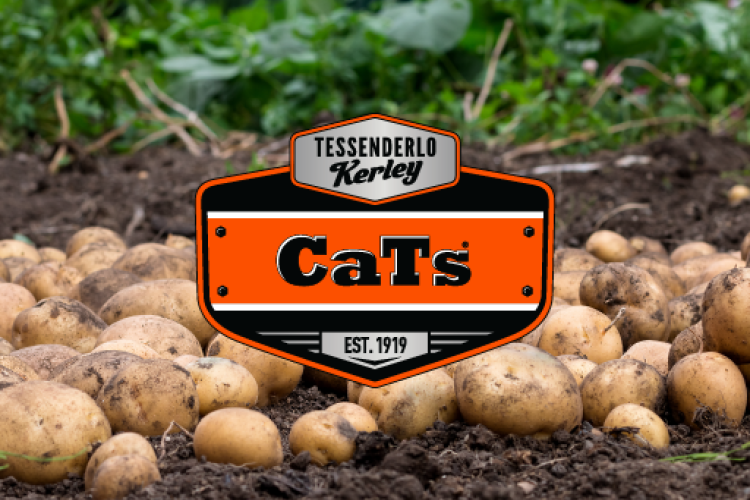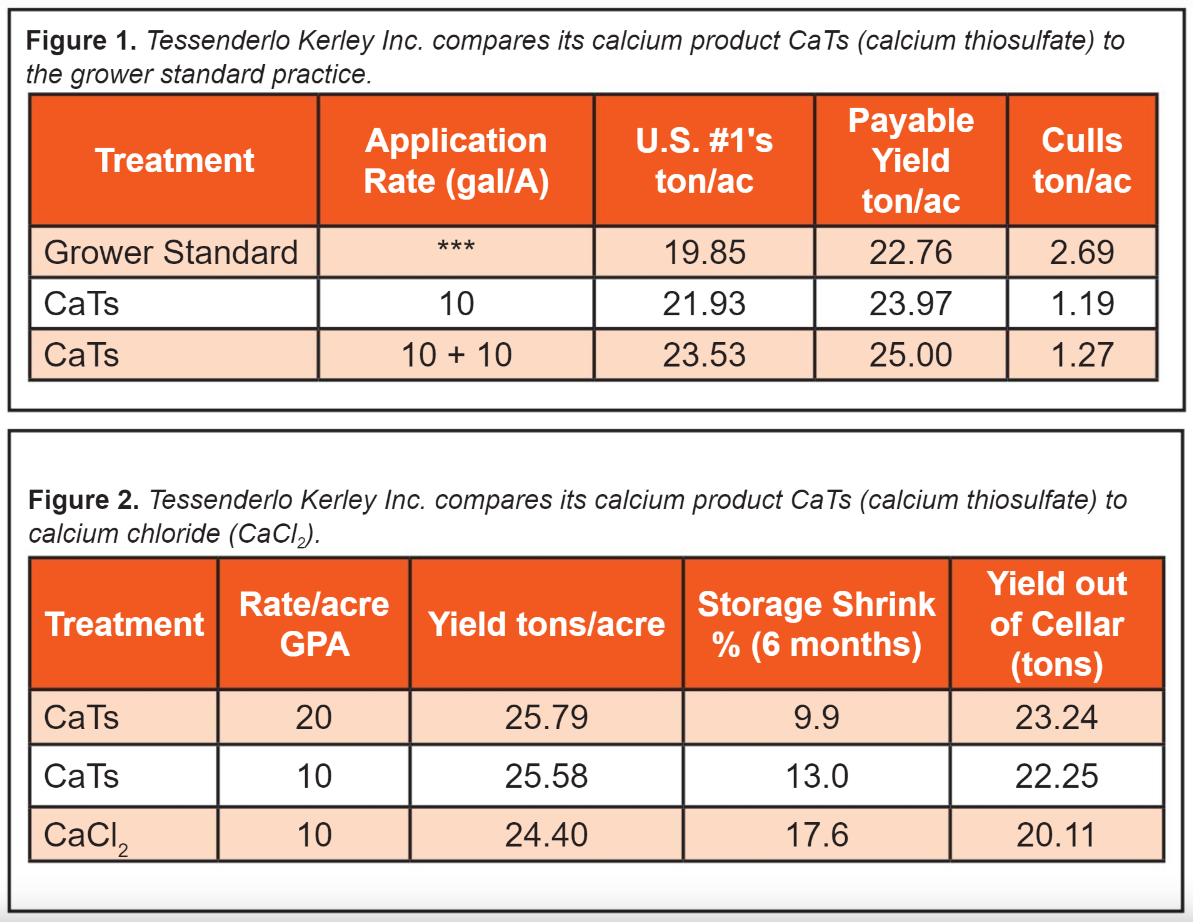
Reducing Potato Storage Shrink with CaTs

The Battle of Potato Storage
When it comes to producing any crop, yield is of utmost importance followed shortly by quality measurements. When it comes to producing potatoes, yield is measured twice: once from the field and again out of storage. For many potato producers a large battlefield that is waged occurs in the storage sheds. This battle is often fought with many different regimens of fungicides and pesticides to protect potato yields. But even with these tools storage shrink can frequently eclipse a quarter of the yield removed from the field. There is good news here, research has found that there is another tool, a preventive one, that can help with reducing storage shrink. This tool is understanding and working with plant physiology and nutrition.
Use of Calcium
Calcium is a crucial part of cell walls in crops, especially tubers like potatoes. Calcium forms the “backbone” of the cell wall structure and when supplied in adequate amounts, calcium leads to higher cell wall strength. Why does this matter? Higher cell wall strength means higher resistance to any diseases or harvesting blunders that can lead to a weakened potato that is waiting to be infected with any number of bacterial and fungal pathogens. Studies have shown that increased cell wall strength from calcium reduces the incidence of buck skinning, hallow heart, black spot, and pink rot among other storage issues.
Here is the tricky thing about calcium fertility: timing is key. As a grower, simply adding calcium at the start of the growing season will not result in decreased storage losses. Why? It comes down to crop physiology. Crops have two main transportation vessels, the phloem and xylem. The phloem is mainly responsible for movement of solutes from the leaves to the rest of the plant including the roots. The xylem is responsible for moving solutes from the roots to the leaves. Why this matters, simply put calcium is a nutrient that can only be transported in the xylem. In other words, once it has left the roots, it will not come back down. So, when calcium is applied at the beginning of the season, when the tubers are not ready to take in and keep calcium, multiple studies show that storability is not increased because that calcium leaves the roots before the tuber can utilize it.
Luckily there is a three to four-week window, when the tubers themselves are putting out stolon and tuber roots to actively seek out and utilize nutrients from the soil to use in the tuber itself. This short window is when any calcium that is bio-available will be taken into the tuber and integrated into the cell walls, increasing the tuber’s cell wall strength. In short, this 3-4 week time-frame is when tuber storability can be influenced and changed.
How can a grower identify this stage in the potato crop? Sadly, not all potato varieties exhibit the tuber and stolon roots clearly, so a good rule of thumb is to dig in the hill and look for when the tubers are a little smaller than golf ball sized. This is when you want to be applying water soluble and bio-available calcium. If this is done, an increase in storability and decrease is storage losses can be attained

Calcium Product Trials
Tessenderlo Kerley Inc and Crop Vitality have completed many trials using our calcium product called CaTs (calcium thiosulfate) to increase storability and have been extremely successful. Looking at chart number 1, it is shown that when adding one application of 10 gallons of CaTs in the tuber and stolon root stage, in-field culls were reduced by 55% compared to the grower standard practice. When CaTs and Calcium Chloride (CaCl) were tested side by side, in chart number 2, there is a clear reduction of storage shrink after 6 months in storage when using CaTs. The storage losses went from 17.6% storage shrink with CaCl to only 9.9% storage shrink with CaTs showing a reduction in storage losses by 44%.
What is the take away? This message should be encouraging, that by working with your crops nutritional needs you can naturally increase your potato cell wall strength and reduce storage losses. This means less money spent on culls, more potatoes making it to the customer, and more money in the growers pocket.

Written by Victoria Marsh, Agronomist
Contact a Specialist